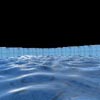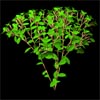
This tutorial shows first how to setup a basic OpenGL skeleton and how to use it to draw 2 dimensional shapes, then we will extend the code to 3D drawing and animation, text output, add distant and spotlights, and show how to use full screen mode and window based output, textures and transparent objects.

In this tutorial I first explain the physics behind ocean waves and I will show you a couple of models how you can simulate the water surface. Finally I show you how you can implement the mathematical part of the algorithms.

by Jens Schneider
Jens is a computer scientist who is specialized on the simulation of water surfaces. He will show you how you can professionally implement simulations of ocean waves. You can find one of his papers about this topic in the paper section, and the source code for this tutorial can already be downloaded.

In this tutorial we will discuss the theory behind the simulation of plants. For this tutorial we will use existing programs (which you can get from my download section) to produce 3D models which you can export in other rendering programs or use in your own programs.

by Gernot Ziegler
Actually this is not a tutorial in the classical sense but a well documented project, that shows how to implement a L-system program including parser. This project consists of three parts: source/executables, documentation of the source and a MS-Powerpoint presentation describing everything.
If you find this project helpfull, it would be nice, if you let Gernot know, that you appreciate his work.

by Sean O'Neil
This tutorial shows you how to procedurally generate full-size planetary bodies at any level of detail. It discusses the pros and cons of different types of procedural algorithms, then Sean explains the method he chose to use in more detail.

by Sean O'Neil
This tutorial shows you how to render full-size planetary bodies at any level of detail. It uses a spherical version of the ROAM algorithm Sean came up with, and it is tailored specifically to the procedural algorithm explained in tutorial 6.

In this tutorial I will explain how you can use particle systems to implement a fountain and I briefly describe what you have to consider, when you use the particle system to implement waterfalls or fireworks.